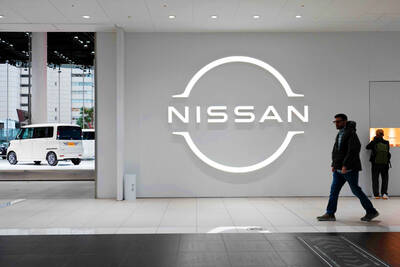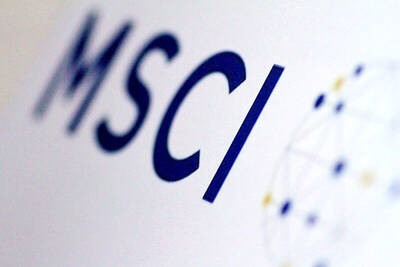Indian firms are expected to announce a sharp rise in profits when the quarterly reporting season kicks off this week, aided by improving business and a low base from the depths of the financial crisis.
The 30 companies that make up Mumbai’s benchmark Sensex index are forecast to announce a year-on-year increase in net profit of between 15 percent and 20 percent for the quarter ending last month, analysts said.
“We have definitely turned the corner. Earnings will be robust, aided by the low base effect of the December 2008 quarter,” said Hitesh Agrawal, head of research at Mumbai’s Angel Broking.
India’s economy grew by a faster-than-expected 7.9 percent in the three months to September, picking up pace from the previous quarter when it expanded by 6.1 percent.
“Demand across sectors is picking up and business confidence is high. The economy has been boosted by foreign capital inflows and government stimulus packages,” said Jigar Shah, senior vice president of Kim Eng Securities India.
Infosys Technologies, the Bangalore-based pioneer of India’s flagship software sector, announces its profits tomorrow, the first index heavyweight to report its earnings.
TCS, the largest software exporter, announces its earnings on Friday and rival Bangalore-based Wipro on Jan. 20.
India’s largest oil exploration firm, Oil and Natural Gas Corp (ONGC), takes its turn on Jan. 21 and the country’s largest passenger car maker, Maruti Suzuki India, will be center stage on Jan. 23.
The improved business sentiment in India is reflected in the Mumbai stock exchange, which vaulted by 80 percent last year — its biggest annual gain in 18 years — after it had declined 52 percent in full-year 2008.
Such has been the force of the revival that India’s government and central bank now face a tricky balancing act in fighting inflation and keeping economic recovery on track.
Analysts say that any monetary policy action in coming months is likely to be mild to avoid snuffing out the recovery.
“The RBI [Reserve Bank of India] could make a ‘calibrated exit’ from the current overtly accommodative monetary policy,” Edelweiss Securities analyst Siddharth Sanyal said in a latest report to clients.
A hike in rates or the cash reserve ratio — the amount that commercial banks have to keep aside as deposit — would take place during the first quarter of this calendar year, the Edelweiss report said.
Indian Finance Minister Pranab Mukherjee said last month that he expected India to grow between 7.5 and 8 percent for the year to March.
Shah and Agrawal said the recovery would mean Indian companies had to cope with rising input costs from metals, commodities, fuel prices and financing — if the expected tightening of monetary policy materializes.
“Companies have to get proactive as input costs will start to rise,” Agrawal said, forecasting Sensex companies to show a 20 percent profit growth in the three months to last month.
India was better insulated from the direct impact of the global turmoil that hit growth in 2008 and early last year because of its strong local demand base.
Sectors such as automobiles and infrastructure could report the strongest results thanks to robust domestic demand, analysts say.
The auto sector has been one of the most robust, showing record sales and export growth last year. Its growth has been fueled by new car launches and cheap finance.
Japanese-controlled Maruti Suzuki India, South Korea’s Hyundai Motor and India’s Tata Motors all announced higher sales of cars and sports utility vehicles last year.
Car sales last month leapt 40 percent from 2008 levels, industry data showed.

PERSISTENT RUMORS: Nvidia’s CEO said the firm is not in talks to sell AI chips to China, but he would welcome a change in US policy barring the activity Nvidia Corp CEO Jensen Huang (黃仁勳) said his company is not in discussions to sell its Blackwell artificial intelligence (AI) chips to Chinese firms, waving off speculation it is trying to engineer a return to the world’s largest semiconductor market. Huang, who arrived in Taiwan yesterday ahead of meetings with longtime partner Taiwan Semiconductor Manufacturing Co (TSMC, 台積電), took the opportunity to clarify recent comments about the US-China AI race. The Nvidia head caused a stir in an interview this week with the Financial Times, in which he was quoted as saying “China will win” the AI race. Huang yesterday said

Japanese technology giant Softbank Group Corp said Tuesday it has sold its stake in Nvidia Corp, raising US$5.8 billion to pour into other investments. It also reported its profit nearly tripled in the first half of this fiscal year from a year earlier. Tokyo-based Softbank said it sold the stake in Silicon Vally-based Nvidia last month, a move that reflects its shift in focus to OpenAI, owner of the artificial intelligence (AI) chatbot ChatGPT. Softbank reported its profit in the April-to-September period soared to about 2.5 trillion yen (about US$13 billion). Its sales for the six month period rose 7.7 percent year-on-year

Nissan Motor Co has agreed to sell its global headquarters in Yokohama for ¥97 billion (US$630 million) to a group sponsored by Taiwanese autoparts maker Minth Group (敏實集團), as the struggling automaker seeks to shore up its financial position. The acquisition is led by a special purchase company managed by KJR Management Ltd, a Japanese real-estate unit of private equity giant KKR & Co, people familiar with the matter said. KJR said it would act as asset manager together with Mizuho Real Estate Management Co. Nissan is undergoing a broad cost-cutting campaign by eliminating jobs and shuttering plants as it grapples

MORE WEIGHT: The national weighting was raised in one index while holding steady in two others, while several companies rose or fell in prominence MSCI Inc, a global index provider, has raised Taiwan’s weighting in one of its major indices and left the country’s weighting unchanged in two other indices after a regular index review. In a statement released on Thursday, MSCI said it has upgraded Taiwan’s weighting in the MSCI All-Country World Index by 0.02 percentage points to 2.25 percent, while maintaining the weighting in the MSCI Emerging Markets Index, the most closely watched by foreign institutional investors, at 20.46 percent. Additionally, the index provider has left Taiwan’s weighting in the MSCI All-Country Asia ex-Japan Index unchanged at 23.15 percent. The latest index adjustments are to